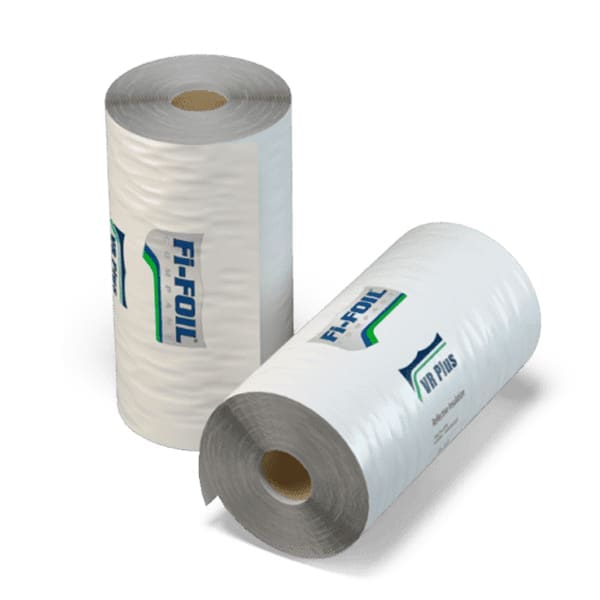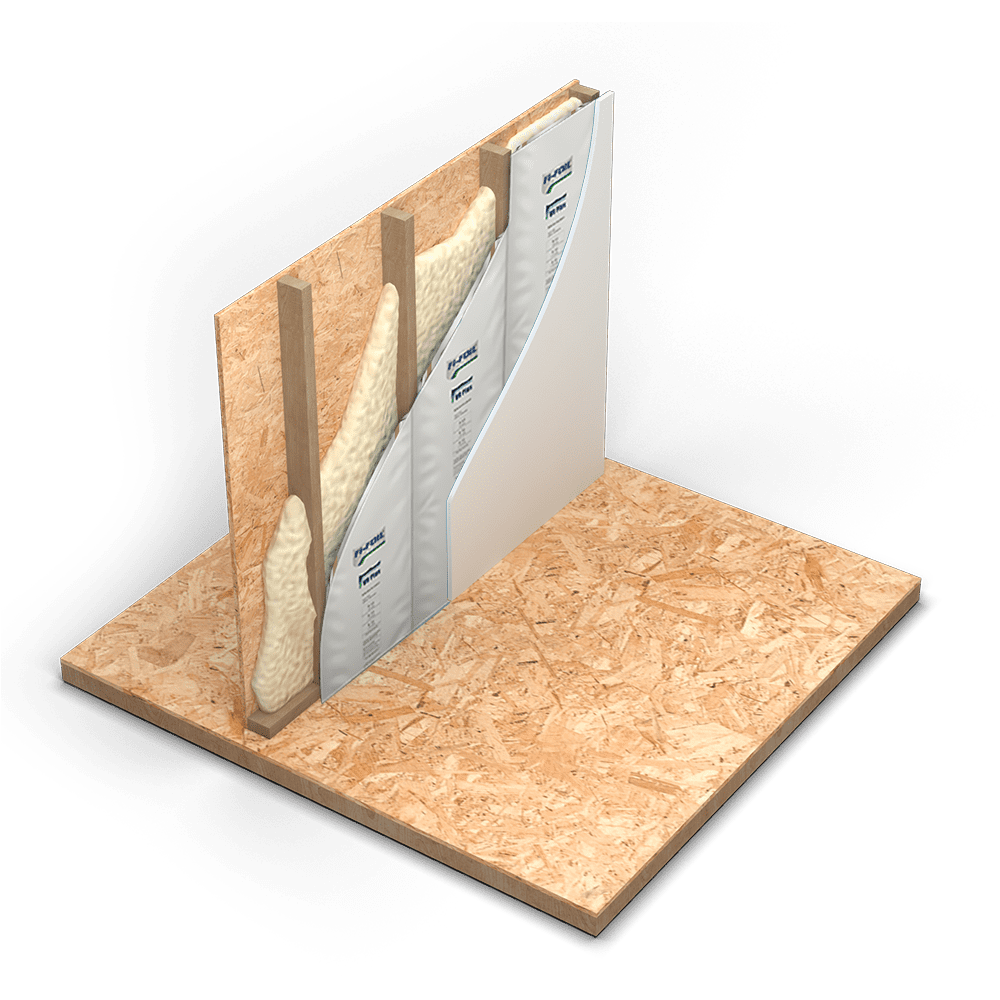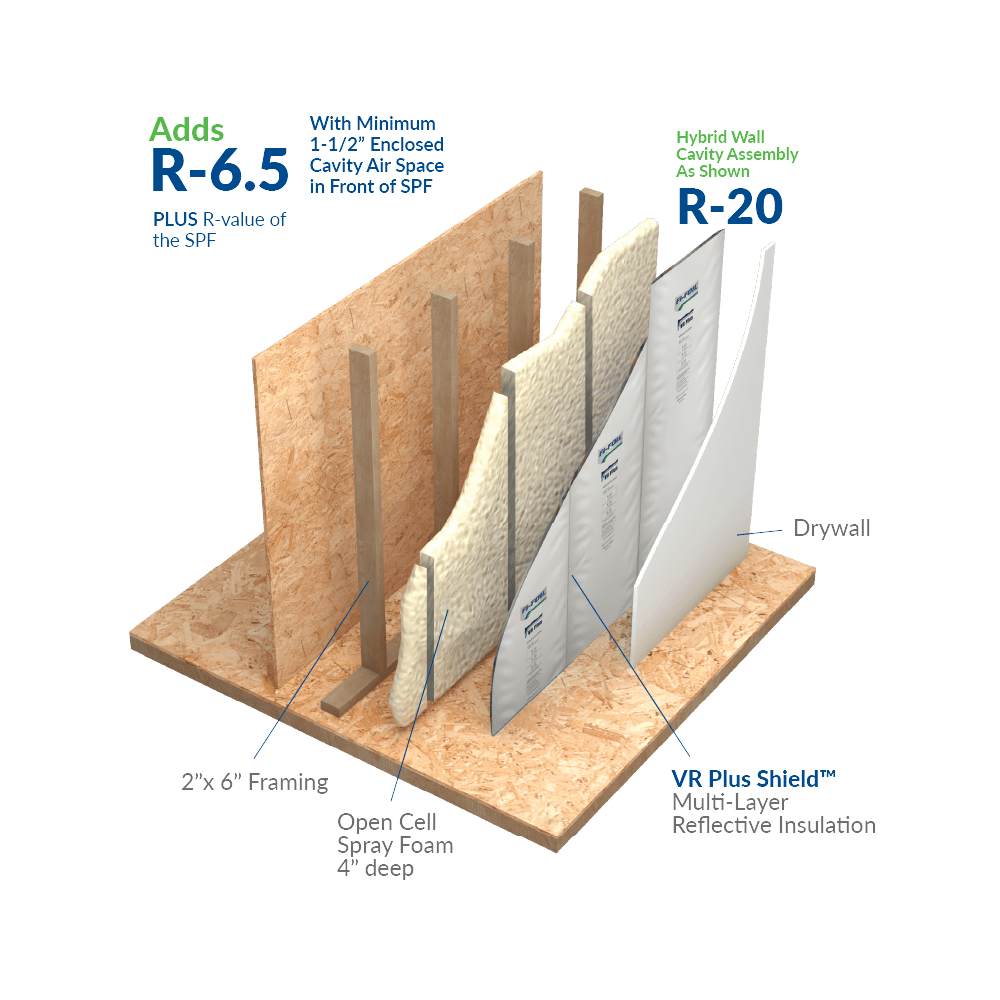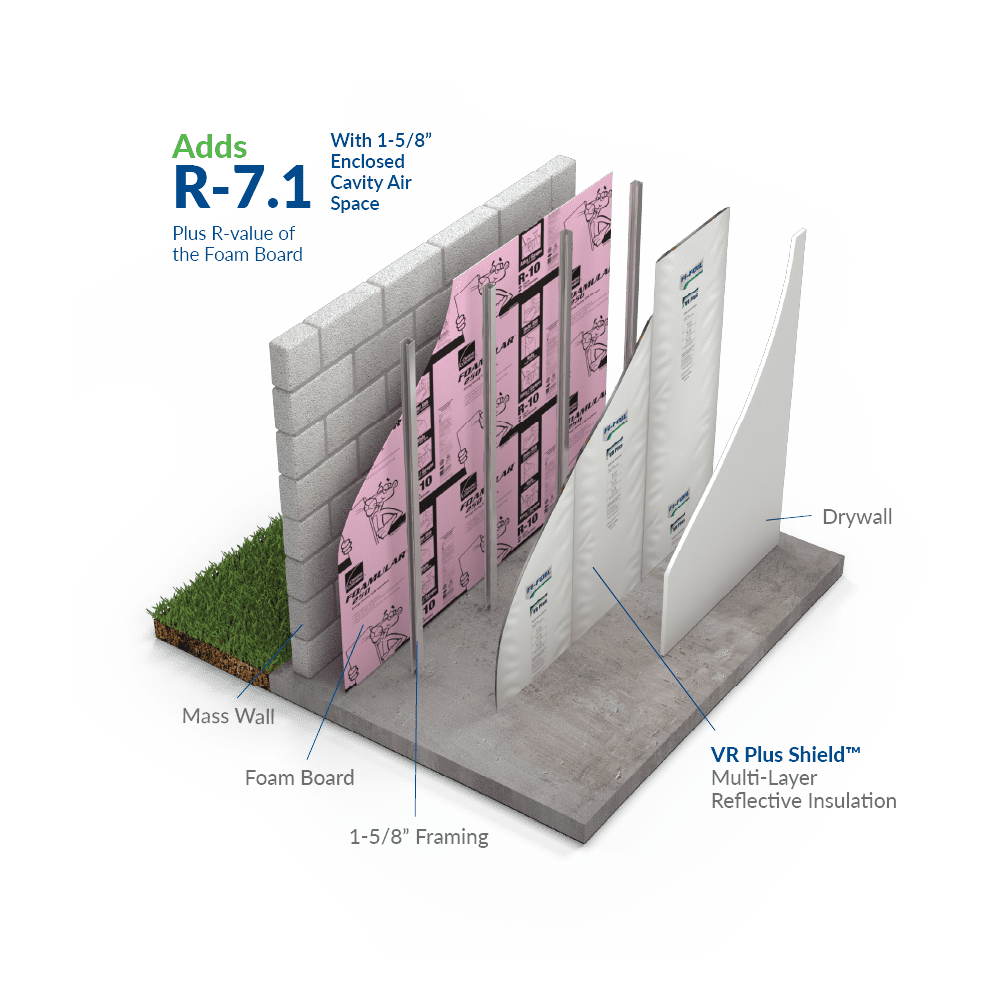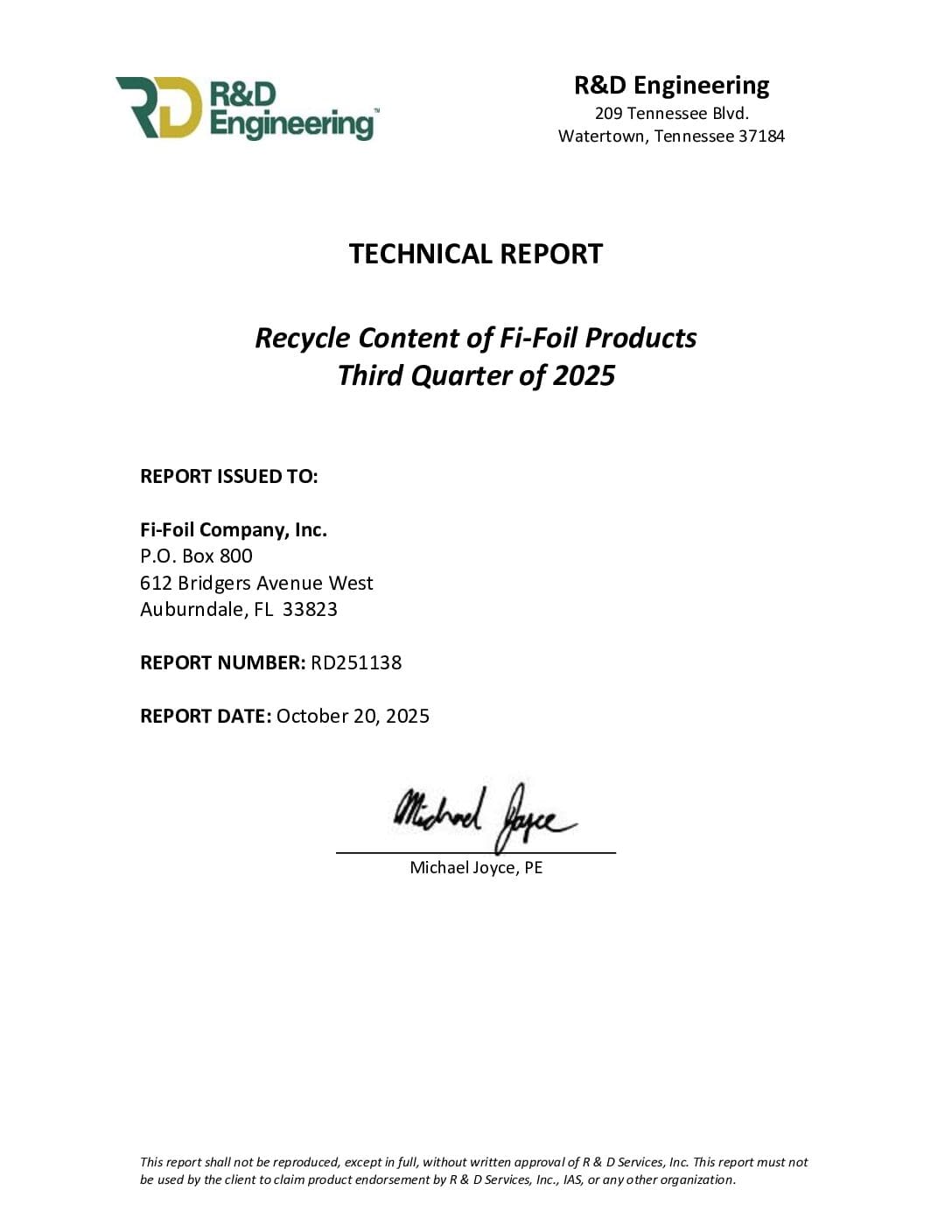A Reflective Insulation Hybrid Solution to Maximize Your Walls R-value
VR Plus Shield™ is a cutting-edge hybrid insulation product that creates high R-value walls cost-effectively. The hybrid insulation system combines low-emittance surfaces and enclosed air spaces. Combined with traditional insulation, such as fiberglass batts or spray foam, it creates a superior insulating system at an unmatched price point.
VR Plus Shield™ is an especially attractive solution in areas with stringent building codes. It provides insulators and builders with a versatile, low-cost, easy-to-install hybrid system that achieves R-20 in small wall spaces.
VR Plus insulation addresses the dominant form of heat transfer—radiation—with layers of high-reflectance and low-emittance materials. This configuration creates three reflective air spaces between the interior wall and traditional insulation that adds an additional R-8 to the wall, which can reduce the amount of spray foam or fiberglass batts needed to achieve the desired R-value.
High-Performance Features and Benefits
- Multi-Layer Hybrid Insulation System
- Outer Layer of Kraft Paper Coated with Polyethylene
- Inner Layer of Premium Grade Aluminum Foil
- Plus Additional Layer of Foil Reinforced with Fiberglass Scrim
- FI-FOIL® Expander Technology Separates Paper and Foil Layers
- Creates Three (3) Reflective Air Spaces
- Low-e Surfaces Reduce Radiant Heat Transfer
- Quick Installation with Staple or Tape Tab
- 16″ or 24″ widths
- Perforated or Solid
- 500 sf Rolls
- Combine with Spray Foam or Mass Insulation
- Achieve R-21 using VR Plus Shield™ System of 2″ R-6.75 SPF with 1-1/2″ Enclosed Air Space
- Achieve R-22 using VR Plus Shield™ with 4″ R-3.7 SPF with 1-1/2″ Enclosed Air Space
- Add R-7 or more Using VR Plus Shield™ with Batt or Foam Insulation
- Verified Recycled Content >28%
- Supports Sustainability
- Lightweight 500 sq. ft Rolls
- Easy to Handle, Installs Faster
- Less Waste on Site – No Shaving SPF
- Less Waste in Landfills – Better for the Environment
- Air Space in Cavity Allows for Last Minute Changes to plumbing or wiring
- Save Labor
- Save Warehouse Space
- Save on Material & Shipping
- High Performance and Compact
- Provides for More Living Area Square Footage for Increased Marketability
- Low-e Reflective Surfaces Improve Performance of Enclosed Air Space
- Maximize Comfort
- Maximize Energy Efficiency
- Used on Net Zero Building Projects
- Supports Sustainable Design Goals
- Specified in the NAHB New American Remodel 2024
- Lowers HERS® and Other Energy Rating Indexes (ERI)
- 10-Year Warranty
- National Network of Insulation Distributors and Contractors
Ensuring Code Compliance
- Meets ASTM C-1244 Standard Specification for Reflective Insulation
- Meets International & Florida Building & Energy Code Requirements
- Meets ASTM C 1224, Reflective Insulation
- Meets International Building Codes (IBC)
- Meets International Residential Codes (IRC)
- Meets International Energy Conservation Codes (IECC)
- Meets Florida Building Codes (FBC)
- Meets Florida Residential Codes (FRC)
- Meets Florida Energy Conservation Codes (FECC)
Request Product Support
Please don’t hesitate to reach out for inquiries, project consultations, or more information about FI-FOIL® reflective insulation system solutions. Our team of experts is dedicated to providing personalized assistance and technical expertise to meet your specific needs. Please note that the more completely the fields below are filled out, the more accurate your response will be.
A TRUSTED LEADER FOR REFLECTIVE INSULATION TECHNOLOGIES
PROVIDING YOU WITH SERVICE, INTEGRITY AND INNOVATION
We manufacture, market, and distribute high-performance reflective insulation technology and radiant barriers. Our products are sustainable and improve building performance and comfort all year round. Our reflective insulation technology is one of the fastest-growing technologies in the world and we want you to grow with us.

